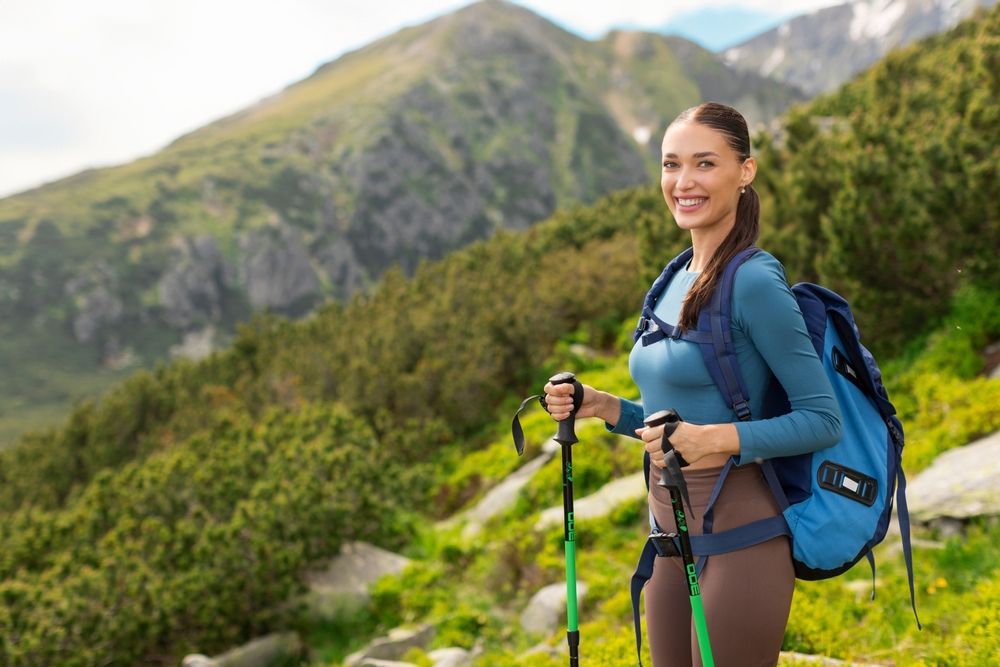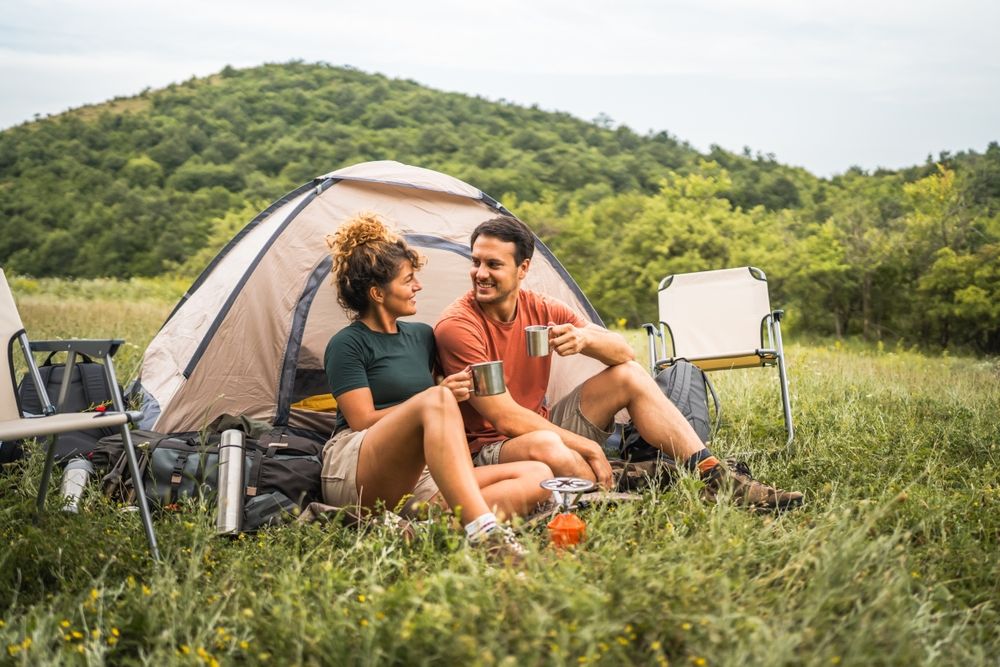Your hiking boots are one of the most important pieces of gear you’ll bring on any trail. A good pair of boots protects your feet, provides support, and keeps you comfortable mile after mile. But with so many choices available, selecting the right pair can be overwhelming.
Comfort is the ultimate goal—because no matter how rugged or stylish a boot is, if it doesn’t feel good, you won't enjoy your hike. This guide will walk you through everything you need to know about finding hiking boots that truly fit your feet and your adventures.
1. Understand the Different Types of Hiking Footwear
Not all hikes require the same type of boot. First, match the style of hiking boot to the terrain and trips you plan to tackle.
Hiking Shoes
-
Low-cut models, similar to running shoes
-
Lightweight and flexible
-
Best for day hikes on well-maintained trails
Day Hiking Boots
-
Mid-cut to high-cut designs
-
Offer more ankle support and protection than shoes
-
Good for moderate trails and light backpacking
Backpacking Boots
-
Built for rugged terrain and heavy loads
-
Stiffer midsoles and high ankle collars for maximum support
-
Designed for multi-day treks and challenging environments
Choosing the right category helps you balance comfort, weight, and protection based on your hiking plans.
2. Prioritize Proper Fit
The most important factor in comfort is getting the right fit. Poorly fitting boots can cause blisters, bruised toes, and sore arches.
Tips for Finding the Perfect Fit:
-
Try boots on at the end of the day when your feet are slightly swollen.
-
Wear the socks you plan to hike in.
-
Make sure there's about a thumb’s width of space between your longest toe and the end of the boot.
-
Walk around, go up and down stairs if possible, and check for heel slippage.
-
Boots should feel snug but not tight—no pinching, no hot spots.
Remember: a slight break-in period is normal, but boots should feel comfortable from the beginning, not painful.
3. Choose the Right Materials
The materials used in hiking boots impact weight, durability, waterproofing, and breathability.
Common Boot Materials:
-
Full-grain leather: Extremely durable and waterproof but heavy and requires longer break-in.
-
Split-grain leather: Lighter and more breathable but less water-resistant.
-
Nubuck leather: Durable like full-grain but softer and more flexible.
-
Synthetics (nylon, polyester): Lightweight, quick-drying, and more affordable; may not last as long.
Material choice depends on your hiking conditions—wet, dry, rocky, or forested trails all benefit from different features.
4. Understand Waterproofing and Breathability
Keeping your feet dry is crucial for comfort, but you need to balance waterproofing with breathability.
Waterproof Boots:
-
Often feature membranes like Gore-Tex or proprietary versions
-
Protect against rain, puddles, and shallow stream crossings
-
Tend to be warmer and less breathable in hot weather
Non-Waterproof Boots:
-
Lighter and more breathable
-
Better for hot, dry climates
-
Dry out faster if they do get wet
For wet or unpredictable weather, waterproof boots offer essential protection. For dry, warm conditions, breathable boots may provide more overall comfort.
5. Pay Attention to Midsole and Cushioning
The midsole is the part of the boot that provides cushioning and determines how stiff the boot feels.
Common Midsole Materials:
-
EVA (Ethylene Vinyl Acetate): Lightweight, cushy, and affordable. Great for most day hikes.
-
Polyurethane: Denser, more durable, and offers more support under heavy loads. Ideal for backpacking.
Choosing the right level of stiffness impacts how comfortable you feel over long distances, especially when carrying a pack.
6. Look at Traction and Outsoles
A boot’s outsole determines how well you grip different surfaces.
What to Look For:
-
Deep, aggressive lugs for muddy or soft surfaces
-
Broader lugs for rocky or hard surfaces
-
Heel brakes to reduce slipping on descents
Vibram outsoles are common on high-quality boots and are known for offering dependable traction across various terrains.
7. Consider Ankle Support and Stability
Ankle support becomes more important the rougher the terrain and the heavier your pack.
-
Mid-cut boots offer a balance of flexibility and support for moderate trails.
-
High-cut boots provide maximum ankle protection and stability, essential for technical trails and heavy loads.
If you often roll your ankles or are tackling uneven, rocky trails, high ankle support can prevent injuries and improve overall comfort.
8. Think About Weight
Lighter boots mean less fatigue, but heavier boots usually provide better protection and durability.
-
Lightweight hiking shoes: ~1–2 lbs per pair
-
Day hiking boots: ~2–3.5 lbs per pair
-
Backpacking boots: 3.5 lbs and up
If you can find a boot that offers the protection you need without unnecessary weight, you’ll feel more energized during your hikes.
9. Break In Your Boots Properly
Even the best-fitting boots need some time to adapt to your feet.
Break-In Tips:
-
Start by wearing them around the house or on short walks.
-
Gradually move to longer hikes.
-
Pay attention to any pressure points or rubbing early on to address issues before major hikes.
Skipping the break-in process increases your risk of blisters and discomfort on the trail.
10. Set a Realistic Budget
Hiking boots are an investment in your comfort and safety.
Price Ranges:
-
Budget boots ($80–$150): Good for occasional hikers and easy trails.
-
Mid-range boots ($150–$250): Durable, supportive, and versatile for regular hikers.
-
Premium boots ($250+): High-performance boots for serious backpackers and rough terrain.
Don’t automatically pick the most expensive boots—choose the pair that fits best and meets the demands of your typical hiking adventures.
11. Know When to Replace Your Boots
Even the best hiking boots wear out over time. Continuing to hike in worn-out boots can lead to foot pain, injuries, and fatigue.
Signs It’s Time to Replace Your Boots:
-
Worn tread with no grip
-
Cracked midsoles
-
Noticeable loss of cushioning
-
Persistent discomfort or new hot spots
On average, quality hiking boots last between 500 to 1,000 miles, depending on use and care.
Pro Tips for an Even Better Boot Buying Experience
-
Shop in the afternoon: Your feet swell slightly during the day—mimicking conditions while hiking.
-
Bring your hiking socks: The thickness of socks affects fit.
-
Try boots with any orthotic insoles you normally use.
-
Don't rush: Spend time walking, squatting, and adjusting the laces.
Buying boots isn’t just a transaction—it’s setting up a foundation for all your future hiking adventures. Comfort today means enjoyment tomorrow.




